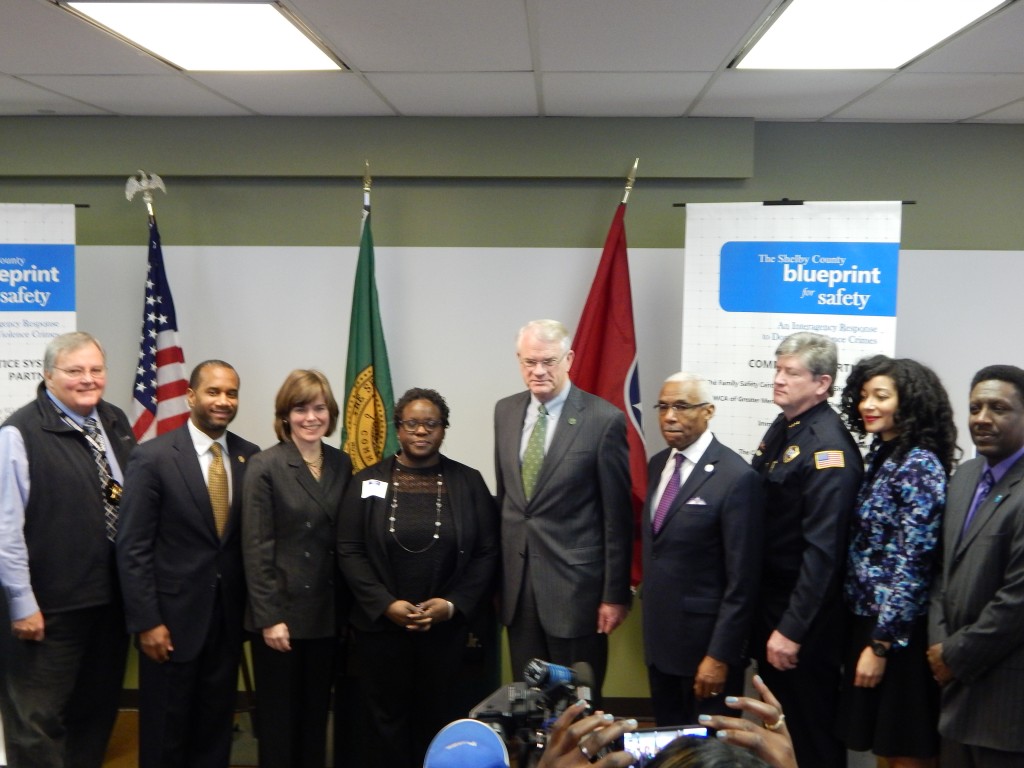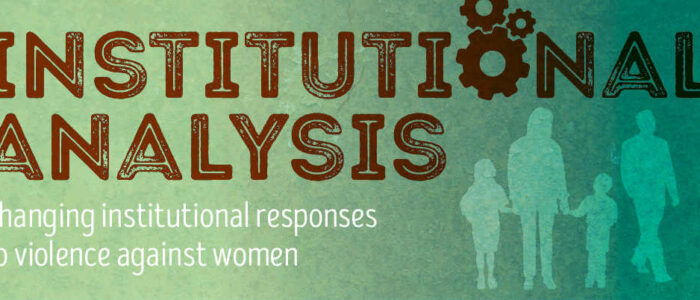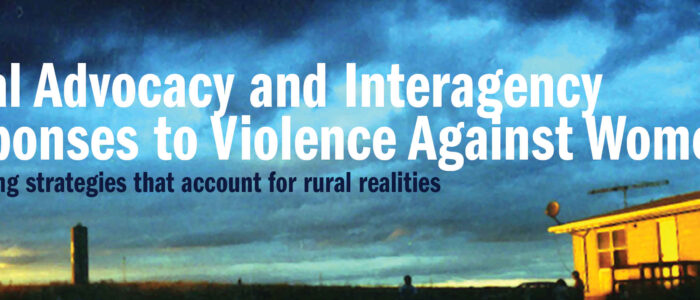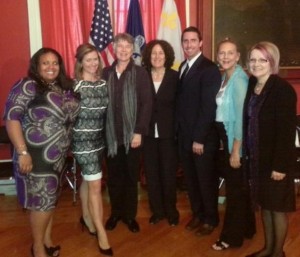From 2010 to 2020, Praxis worked with the Office on Violence Against Women and selected demonstration sites to create customized versions of The Blueprint for Safety to enhance their criminal justice response to domestic violence cases.
Through this initiative, Praxis provided direct, specialized technical assistance to three selected OVW grantee communities to create customized versions of The Blueprint for Safety: An Interagency Response to Domestic Violence Crimes (The Blueprint). The demonstration sites enhanced their criminal justice response to domestic violence cases and adapting The Blueprint to their local jurisdictions.
The demonstration sites have rewritten The Blueprint to adapt the policies and protocols to local conditions and state laws. They moved from a written document to a living document by engaging in a process whereby each agency implements, complies with, and sustains the Blueprint policies and protocols.
Praxis’ technical assistance to the sites included intensive, ongoing, one-on-one email, phone, video conference and on-site support and training to each demonstration site as they adapted The Blueprint to their local jurisdictions and entered into the implementation and monitoring phases.
The following three communities were part of this Demonstration Initiative:
- Duluth, MN
- New Orleans
- Shelby County, Tennessee
Praxis began intensive work with each site to adapt The Blueprint to local jurisdictions in Summer 2011. The project has been completed now that all sites have launched and adopted The Blueprint for Safety.
- Duluth, MN
- New Orleans, LA
- Shelby County, TN
Duluth, Minnesota adopted their Blueprint for Safety on January 29, 2015.
City of Duluth Adopts Blueprint for Safety
Office on Violence Against Women demonstration site adopts policy to strengthen long-standing coordinated community response

“Congratulations to Duluth for being such leaders and visionaries in addressing domestic violence, nationally and internationally. The whole idea of the Blueprint is an approach that looks at where we have gaps – from 911 through law enforcement, prosecution and corrections – and to identify what we need to address to make sure we have safer communities. In communities with long-standing coordinated community responses, like Duluth, the Blueprint focuses even more specifically on where those gaps are.” – Bea Hanson, Principal Deputy Director, Office on Violence Against Women
On Thursday, January 29, 2015, the Duluth mayor’s office and 6 criminal justice agencies announced the adoption of The Blueprint for Safety to strengthen the city’s Duluth Model coordinated community response to domestic violence cases.
Duluth joins the City of New Orleans as the second of three national demonstration sites who have now adapted the successful St. Paul Blueprint for Safety. In 2011, these cities and Shelby County/Memphis, TN, were selected as national sites for the Blueprint for Safety Adaptation Demonstration Initiative, a project of the Office on Violence Against Women, U.S. Department of Justice, in partnership with Praxis International.
The Blueprint is a fully articulated plan for the coordination of the justice system response to domestic violence crimes, enhancing its capacity to stop violence, reduce harm and save lives. Read more…
 “The Blueprint’s attention to risk is what moved our CCR to another level. Risk is a big topic around the country; people are all trying to figure out how you collect it, what you do with it, but what you find lots of times is an agency will collect this information but never use it. Or take 3 risk tools and combine them…with an outcome that is not always relevant to what was intended. The Blueprint takes all this research, tells you how to collect, transfer and use that risk information, from 911 to probation. Its the first real project that has a multi-agency design on how to utilize risk. Our [CCR] is absolutely better from the Blueprint work we’ve been doing.” Scott Miller, Blueprint Co-coordinator, Domestic Abuse Intervention Programs
“The Blueprint’s attention to risk is what moved our CCR to another level. Risk is a big topic around the country; people are all trying to figure out how you collect it, what you do with it, but what you find lots of times is an agency will collect this information but never use it. Or take 3 risk tools and combine them…with an outcome that is not always relevant to what was intended. The Blueprint takes all this research, tells you how to collect, transfer and use that risk information, from 911 to probation. Its the first real project that has a multi-agency design on how to utilize risk. Our [CCR] is absolutely better from the Blueprint work we’ve been doing.” Scott Miller, Blueprint Co-coordinator, Domestic Abuse Intervention Programs
In a community like Duluth, with a long-standing coordinated response, the Blueprint for Safety can strengthen domestic violence intervention practices. The Duluth Blueprint put into one collective policy the effective practices that were created here over the years, but also enhanced intervention practices.
911: |
|
Law Enforcement: |
St. Louis County Emergency Communications |
|
Duluth Police Department |
|
|
|
Jail, Warrants and Court Security: |
|
Prosecution: |
St. Louis County Sheriff’s Office |
Duluth City Attorney’s Office |
|
|
|
|
Prosecution: |
|
Victim Services: |
St. Louis County Attorney’s Office |
St. Louis County Attorney’s Office |
|
|
|
|
Pretrial and Probation:
|
|
|
Arrowhead Regional Corrections, Duluth Office |
|
|
|
In Duluth, practitioners engaged in a three-year process of examining policies, observing practitioners at work, analyzing agency practices and forms, and conducting focus groups with battered women to create these new practices.
New Orleans adopted their Blueprint for Safety on October 21, 2014.
City of New Orleans Adopts Blueprint for Safety
“A diverse coalition of leaders from across the city have come together to take a unified stand against domestic violence. Our mission is clear: better respond to domestic violence so that we can stop the violence and save lives.” – New Orleans Mayor Mitch Landrieu

On October 21st, 2014, New Orleans adopted the Blueprint for Safety, joining Saint Paul, Mankato and Winona, Minnesota in committing to a system-wide approach to close gaps in domestic violence intervention.
The City of New Orleans was selected in 2011 as one of three national sites for the Blueprint for Safety Adaptation Demonstration Initiative, a project of the Office on Violence Against Women, U.S. Department of Justice, in partnership with Praxis International. The Shelby County/Memphis, Tennessee and Duluth, Minnesota demonstration sites will launch their Blueprints early next year.
The Blueprint for Safety is an innovative approach in criminal justice intervention to protect victims of battering and end intimate partner violence. It is a comprehensive approach to confronting domestic violence crimes, based on thirty years of community practice and research.
Using the Blueprint, a coordinated justice system responds to domestic violence offenses more quickly and effectively, enhancing its capacity to stop violence, reduce harm and save lives. The Blueprint:
- Improves how information is shared between agencies in the justice system – from 911 operators to the police to prosecuting attorneys to the courts.
- Ensures risk is properly assessed and responded to at every step.
- Encourages new victim engagement strategies.
- Directs practitioners to pay attention to unintended negative impacts on survivors and their communities.
- Creates a new way for agencies to work together to identify problems and solutions for greater protections for victims
In New Orleans, practitioners from six criminal legal system agencies engaged in a two-year process of examining policies, conducting focus groups with victims, observing practitioners at work, analyzing agency practices and forms, before adopting the New Orleans Blueprint for Safety. Participants in the effort included the New Orleans Police Department, Office of the Orleans Parish District Attorney, Orleans Parish Sheriff’s Office, Domestic Violence Monitoring Court, New Orleans District Probation and Parole, City of New Orleans Municipal Court with support from the Mayor’s Domestic Violence Work Group, the New Orleans Family Justice Center, and the Disparate Impact Strategic Planning Committee.

Bea Hanson, Principal Deputy Director, Office on Violence Against Women, U. S. Department of Justice and New Orleans Mayor Mitch Landrieu
Excerpts of comments by Bea Hanson, Principal Deputy Director, Office on Violence Against Women:
Mayor Landrieu’s leadership in addressing domestic violence is commendable. In far too many places, we don’t have leadership from the top and this is so very important. Here in New Orleans, you have not only the Mayor’s leadership but also the police chief, the sheriff, the district attorney, the courts – all of this leadership is what could make the Blueprint happen here.
We know when we are not coordinated (in our response) that bad things can happen. And we know that domestic violence is a chronic problem. It doesn’t just happen once, but is about a pattern of power and control. And it’s a long process that we all need to stay involved in (to protect victims). You’ve created this in your Blueprint. And while this is a celebration of your accomplishment, it’s also a beginning, where you will now be putting this new policy into practice. This will be the hard work and the Office on Violence Against Women is committed to working with you to put the Blueprint into practice.
Amalfi Parker, New Orleans Blueprint Coordinator, Kati Bambrick Rodriguez,
Domestic Violence Program Coordinator, New Orleans Department of Health,
Jane Sadusky, Praxis International, Bea Hanson, Principal Deputy Director, Office on Violence Against Women, Kevin Sweeney, Program Specialist, OVW, Julie Tilley and Denise Eng, Praxis
911 Communications: |
|
Law Enforcement: |
City of New Orleans Police Department |
|
City of New Orleans Police Department |
|
1. Do you think he/she will seriously injure or kill you or your children? What makes you think so? What makes you think not?
|
|
Prosecution and Victim Witness Advocates: |
|
Jail Administration: |
Office of the Orleans Parish District Attorney and City of New Orleans Municipal Court |
Orlean’s Parish Sheriff’s Office |
|
|
|
|
Domestic Violence Monitoring Court & Probation and Parole:
|
|
|
Orleans Criminal District Court & New Orleans District Probation and Parole |
||
|
Read more about the New Orleans Blueprint for Safety launch
Mayor Landrieu Announces a New Domestic Violence Initiative
http://www.nola.gov/mayor/press-releases/2014/20141021-blueprint-press-release/
Mayor Mitch Landrieu announces new domestic violence program aimed at prioritizing most at-risk
http://www.nola.com/crime/index.ssf/2014/10/new_orleans_domestic_violence.html
New Orleans unveils strategy to combat domestic violence
http://www.theneworleansadvocate.com/news/crime/10587097-123/new-orleans-unveils-strategy-to
Shelby County adopted their Blueprint for Safety on February 19, 2015.
Shelby County, Tennessee Adopts Blueprint for Safety
“Thank you to Bea Hanson from the Department of Justice. We appreciate so much the fine work that the Blueprint has facilitated here in Shelby County. We have 8000 domestic violence cases in our area annually and the Blueprint helps us differentiate the cases of elevated risk and work collectively with all of the service providers to focus on the victims of these crimes.” – Mark H. Luttrell, Jr., Mayor of Shelby County

Launch speakers: Bill Oldham, Shelby County Sheriff; Edward L. Stanton, III, U.S. Attorney; Amy Weirich, District Attorney General; Olliette Murry-Drobot, Family Safety Center Director; Mark H. Luttrell, Jr., Mayor of Shelby County; A.C.Wharton, Jr., Mayor of Memphis; Mike Ryall, Deputy Chief of Memphis Police Department; Lia Roemer, YWCA/Blueprint Coordinator; and Kevin Reed, Judicial Commissioner.
On Thursday, February 19, 2015, the Shelby County Tennessee Mayor and City of Memphis Mayor joined county and city criminal justice agencies in announcing the adoption of their new collective Blueprint for Safety policy to enhance their response to domestic violence cases. Watch a news clip on this announcement.
Shelby County joins the cities of New Orleans and Duluth as the final of three national demonstration sites who have now adapted the successful St. Paul Blueprint for Safety. In 2011, these sites were selected as national sites for the Blueprint for Safety Adaptation Demonstration Initiative, a project of the Office on Violence Against Women, U.S. Department of Justice, in partnership with Praxis International.
The Blueprint is a fully articulated plan for the coordination of the justice system response to domestic violence crimes, enhancing its capacity to stop violence, reduce harm and save lives. Read more…
Excerpts of comments by Bea Hanson, Principal Deputy Director, Office on Violence Against Women:
“Thank you to all of you for your leadership and commitment to ending violence against women. You are a shining example for the rest of the nation of what one community can do.
“As part of the demonstration initiative, Shelby County is on the leading edge of adapting a truly comprehensive interagency criminal justice response to violence against women. This isn’t easy to do. The Blueprint is an approach to domestic violence cases that coordinates agency responses around the shared goals of safety and justice, and closes the gaps between what victims of violence need and the ways the CJS is currently responding.
“The whole point of the Blueprint is to create this interagency response – from 911 to law enforcement to prosecution to parole – all working together to make sure we are keeping victims safe and holding offenders accountable. And this also incorporates the work of nonprofit victim service organizations. This coordination is really what is key to making huge inroads in the struggle against domestic violence.
“No one of us can do it ourselves – law enforcement can’t do it alone – prosecution can’t do it alone – victim services can’t do it alone. Its that coordination of us doing it together. While all of our jobs is to create safety, we do it from different vantage points. These different vantage points, all brought together, can be what it takes to really protect victims.”
In Shelby County, practitioners engaged in a three-year process of examining policies, observing practitioners at work, analyzing agency practices and forms, and conducting focus groups with battered women to create new practices.
911:
|
Law Enforcement: |
Memphis Police Department & Shelby County
|
Memphis Police Department & Shelby County
|
|
|
Jail, Warrants and Court Security: |
Prosecution: |
Shelby County Sheriff’s Office |
Shelby County District Attorney General’s Office |
|
|
Victim Services: |
Pretrial Services & Probation: |
|
|
|
|
|
General Sessions Division 10: Domestic Violence Court |
|
|
|






